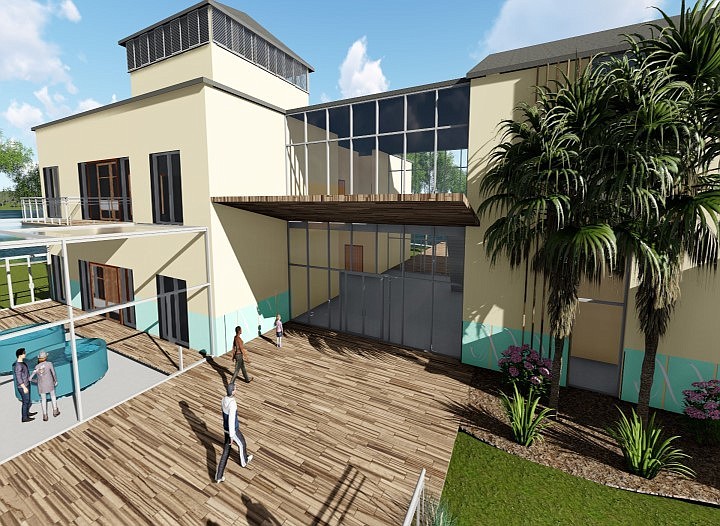- January 17, 2025
-
-
Loading

Loading

The location of Whitney Laboratory for Marine Bioscience is perfect for studying local biodiversity and advancing biomedical research. Unfortunately, space is limited — if you stopped by for a visit and walked through the different labs, you’d see aquariums filled with zebra fish, tucked away in closet rooms; or glass bowls of sea anemones or worms stacked on the lab benches; or banks of dissection microscopes hugging the walls.
After the difficulties of 2020 — with a global pandemic and the resulting safety protocols and limitations on lab resources — 2021 is looking promising for Whitney Laboratory.
With plans to begin construction of a new state-of-the-art facility, the lab is poised to double its research space and expand its capacity to benefit both the scientific community and the folks who live in (and visit) Flagler county.
Plans for the 25,000-square-foot building were introduced in 2002, while fundraising for the project began in 2013.
Since then, lab administrators have raised close to half of the $28.5M required for the new facility.
On the morning of June 2, Gov. DeSantis approved $16.5M in this year’s state budget to be allocated towards the construction of the new research building on Whitney’s campus.
“We’ve waited a long time to get a new building, and we’re looking forward to filling it up with more of the best and brightest scientists in the country!”
— MARK MARTINDALE, director, UF Whitney Lab
“This is the only capital construction money coming to the entire UF campus this year,” Director Mark Martindale said. “We have met our target, including almost $10 million in private gifts, and planning for the building will continue in earnest.”
Martindale and Jessica Long, senior director of advancement for Whitney Laboratory, recently met with UF campus planning and construction teams over Zoom.
The meeting included over 80 different individuals representing design and construction firms. UF and Whitney Laboratory administrators will begin interviewing firms and have narrowed the list to three potential candidates by the middle of this month.
Construction of the new building is expected to commence by winter of 2023.
Those who have driven past Whitney Laboratory for Marine Bioscience on the A1A may be surprised to learn about what happens behind the “bunker walls” of the main research building.
The current facilities are a snapshot of the '70s — squat and durable enough to withstand a hurricane, but hardly a poster board for aesthetics.
“Our existing building is dilapidated with small rooms, poor lighting, and insufficient airflow,” Martindale explained, highlighting the need for an updated building.
The concrete walls may show some crags of old age, but the work done inside those walls is pushing the boundaries of scientific conservation and discovery.
On the banks of the Matanzas Inlet, Whitney Laboratory researchers are engaged in oyster restoration, an initiative that began in 2019 to prevent shoreline erosion and promote local biological diversity.
Technology used by researchers in the Sea Turtle Hospital has contributed to fighting the current COVID-19 pandemic.
Research technicians, graduate students, and post-docs are engaged in scientific research spanning antibiotic discovery, stem cell biology, and cellular regeneration — all of which lay the groundwork for advancing biomedicine and public health.
With the construction of the new building, Whitney Laboratory administrators and staff are responding to the nation’s growing demand to inspire and train STEM investigators, both young and old.
“We’ve waited a long time to get a new building,” Martindale said. “And we’re looking forward to filling it up with more of the best and brightest scientists in the country!”
The new facility will allow for expanded lab space devoted to specialized areas of study such as sensory biology and neuroscience, as well as additional environmental conservation research.
The building will also include an educational center to attract visitors who would like to learn more about the research going on in the lab and its impact to the community.
One key added feature will be a new-and-expanded sea turtle hospital where the public can learn more about local sea turtles.
With the lab’s location tucked between Marineland and the Matanzas Inlet, families visiting the Florida First Coast will be able to swim with dolphins and then walk across the street to Whitney Laboratory’s new facility educational center.
“None of this would be possible without the community’s significant investment in research, education, and conservation on our coast,” Long said. “We’re especially grateful to our local legislators Paul Renner, Cyndi Stevenson, and Sen. Travis Hutson, who have always been supportive of STEM education and research at UF’s Whitney Laboratory.”